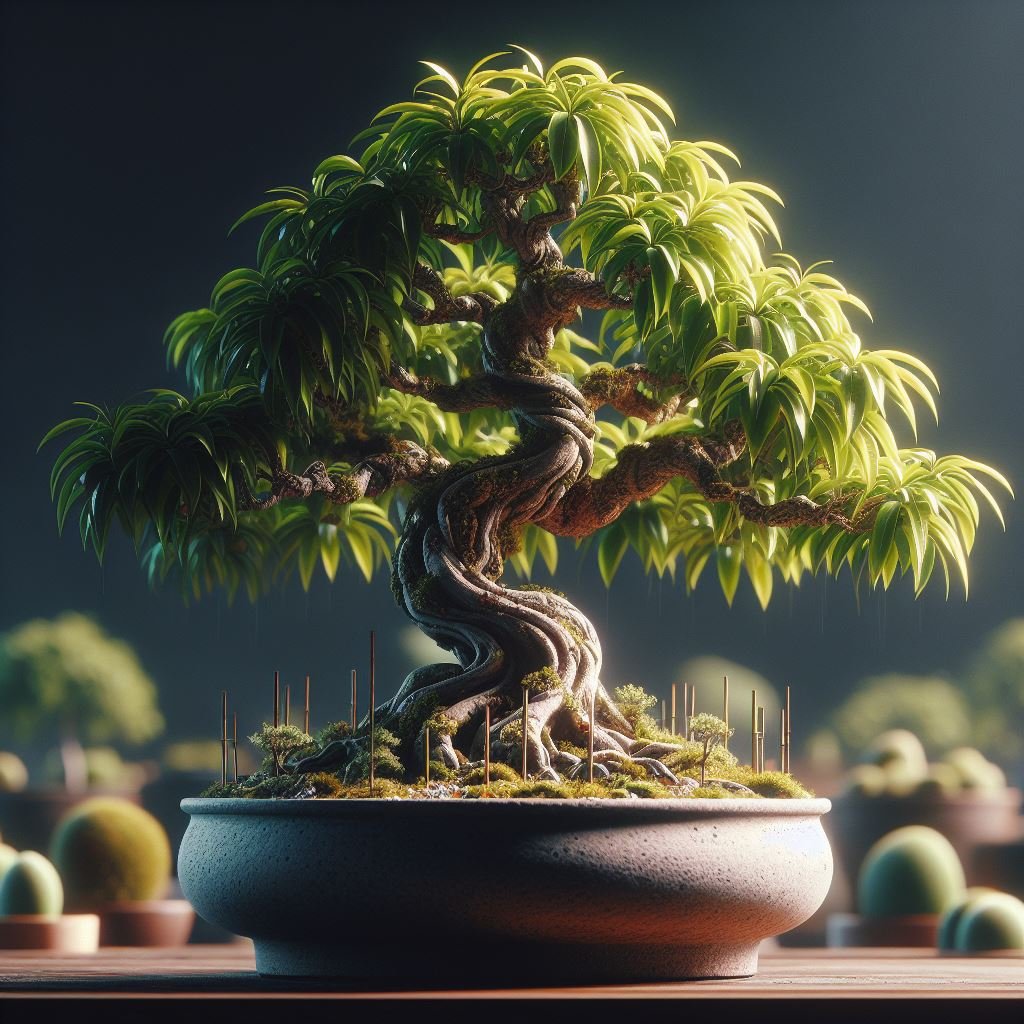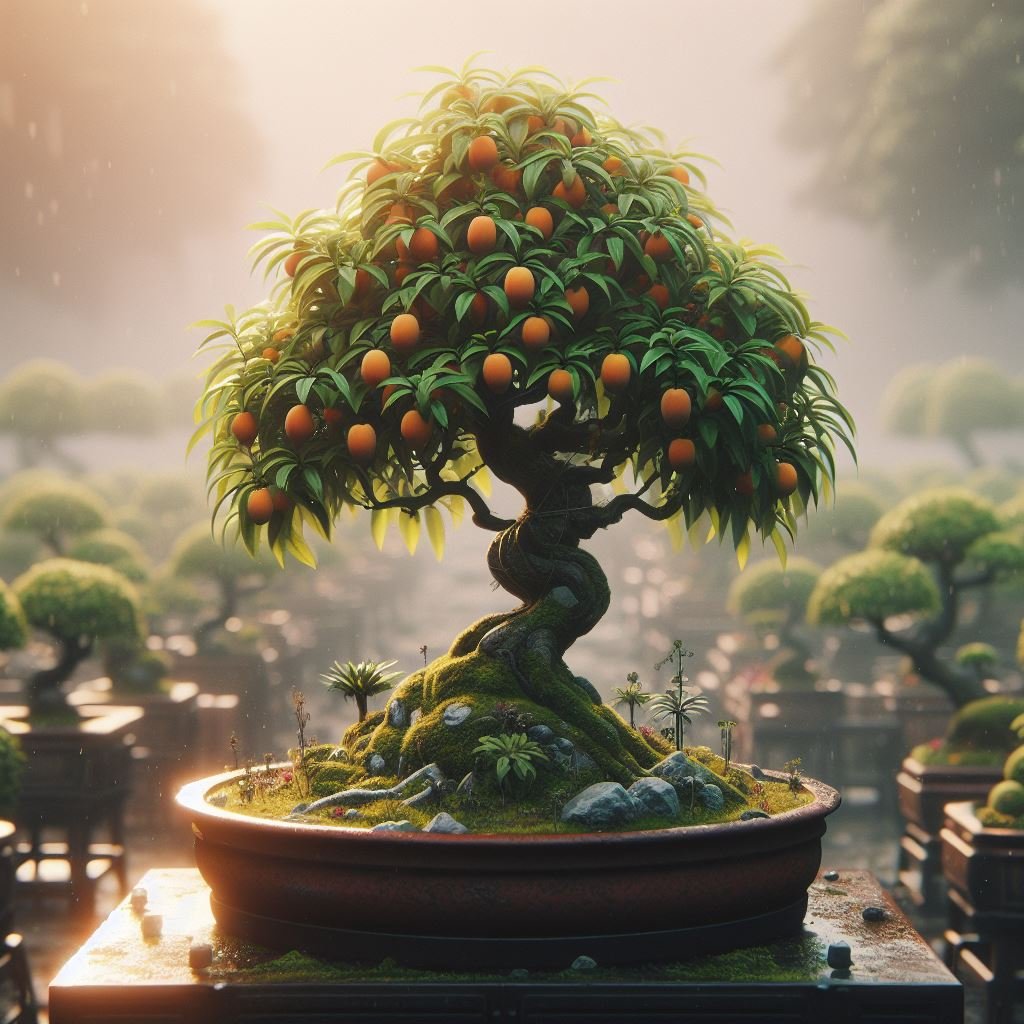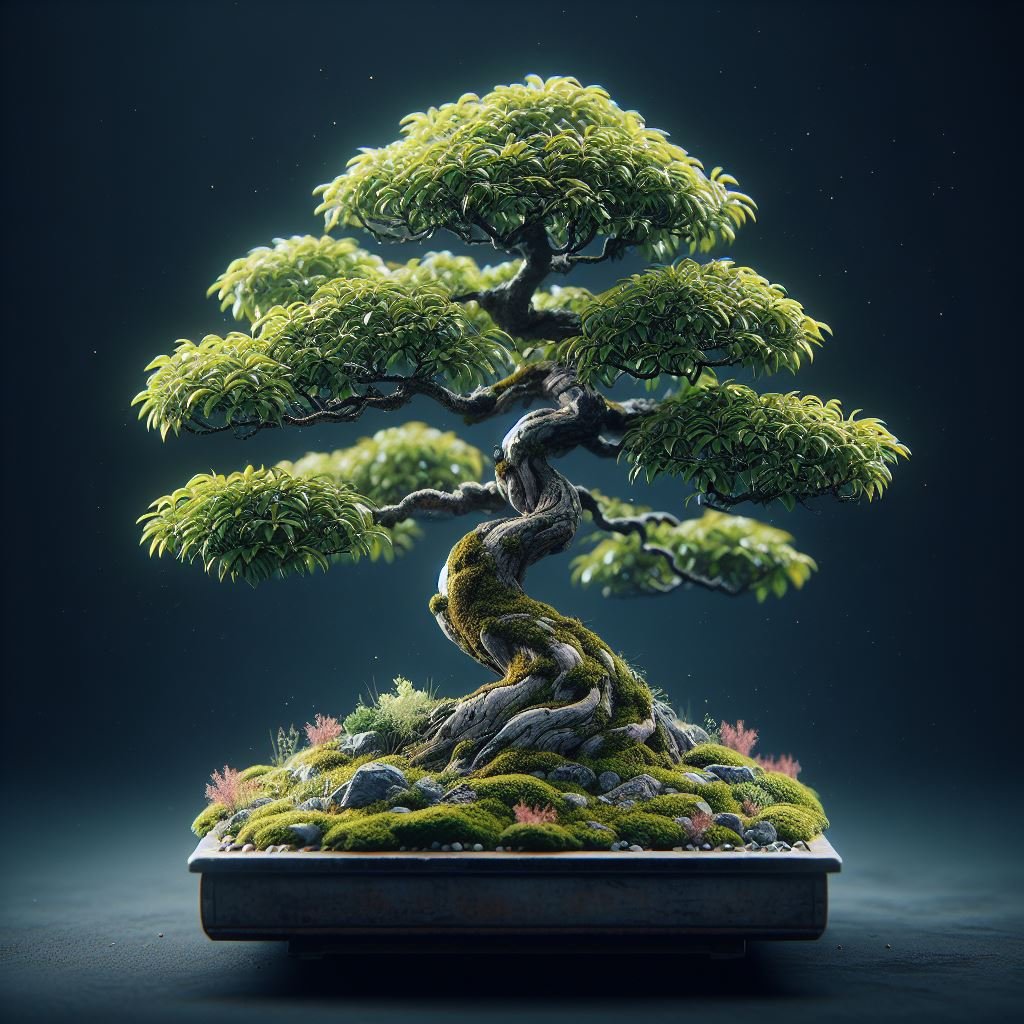Introduction
Bonsai mango trees are a miniature spectacle of nature’s beauty, combining the lush appeal of a tropical mango tree with the artistry of bonsai. These charming, pint-sized trees bring a unique, tropical flavor to any living space, making them a captivating choice for bonsai hobbyists, gardeners, and home decor enthusiasts alike. However, to ensure your bonsai mango tree thrives and maintains its miniaturized charm, it needs the right care. This blog post will delve into the key aspects of caring for your bonsai mango tree, from temperature and lighting to soil, watering, pruning, and disease prevention.
How to Grow Your Bonsai Mango Tree
Growing a bonsai mango tree can be a rewarding experience, but it requires patience and care. Here’s how you can grow your bonsai mango tree:
| Attribute | Description |
|---|---|
| Type of Tree | Tropical Evergreen |
| Time to Fruit | 2-3 years |
| Fruit Size | Similar to regular mango |
| Sunlight Requirements | Minimum of 8 hours per day |
| Watering Frequency | Regularly but allow soil to dry between watering |
| Soil Type | Well-draining potting soil mixed with coarse sand |
| Temperature Requirements | Warm tropical climate |
| Pruning/Trimming | Regularly to maintain shape and encourage growth |

- Choosing the Seed or Plant: You can grow a mango bonsai either from seeds or from a nursery plant. Most people prefer to grow a mango tree from seed. You can also use an Alphonso mango for this process.
- Preparing the Pot and Soil: Fill a bonsai-size plant pot 1/3 full of a 50-50 mix of potting soil and coarse sand. Mangos do best with excellent drainage, so ensure your container is at least 20 by 20 inches and has plenty of drainage holes.
- Planting: Remove the mango seedling from the nursery pot and place it into the soil. Then add more soil until the roots are well covered.
- Trimming: Keep trimming the branches and never let them grow too high. However, do not cut too much at a time as it could harm the plant.
- Care and Maintenance: Prepare for a long journey if you’re beginning a tree sapling from a seed. A bonsai tree might take somewhere between 10 to 15 years to mature. Water the bonsai properly and remember that all trees can be turned into bonsai, including the mango which has large leaves and therefore needs to be a quite big bonsai to have the right proportions and look.
Remember, creating a bonsai is an art form that requires patience and persistence. But with time and care, you can create a beautiful bonsai mango tree.
Footnotes
- Abana Homes ↩
- Quora ↩ ↩2 ↩3
- Hunker ↩ ↩2
- Bonsai Plants Online ↩
- Better Leaves ↩ ↩2
- Bonsai Tree Gardener ↩
- Bonsai Empire ↩
Ideal Temperature and Lighting of Mango Bonsai
Your bonsai mango tree is a tropical delight, and as such, it thrives best in warm temperatures. Ideally, the temperature should be maintained between 70°F and 80°F. During winter months, ensure your tree stays in a room above 60°F.
When it comes to lighting, your bonsai mango tree loves plenty of bright, indirect light. A sunny windowsill with some shading or an area with filtered sunlight is perfect. Remember, although the tree enjoys light, direct, scorching sunlight might cause leaf burn.
Watering Frequency and Amount of Mango Bonsai
Watering is a crucial aspect of keeping your bonsai mango tree healthy. These trees prefer evenly moist soil, but not waterlogged. A good rule of thumb is to water when the top inch of the soil feels slightly dry to the touch. Water your tree thoroughly, allowing excess water to drain out of the pot’s bottom. Avoid a fixed watering schedule; instead, monitor the tree’s needs as they can change with the seasons and indoor conditions.
Soil and Fertilizer Types of Mango Bonsai
Choosing the right soil is key to your bonsai mango tree’s well-being. A well-draining soil mix, such as a blend of Akadama, pumice, and lava rock, works best. This ensures the roots have access to necessary moisture without becoming waterlogged.

When it comes to fertilizing, opt for a balanced, slow-release bonsai fertilizer with equal parts Nitrogen, Phosphorus, and Potassium (NPK). Feed your tree every two weeks during the growing season (spring and summer) and once a month during dormant periods (fall and winter).
Pruning and Shaping Techniques of Mango Bonsai
Pruning is integral to maintaining the miniature allure of your bonsai mango tree. Regularly prune your tree to maintain its shape and remove any unhealthy or oversized leaves. Use sharp bonsai shears for clean cuts.
For shaping your tree, wiring techniques can be employed. However, remember that mango trees have a delicate bark, so use the thinnest wire possible to avoid scars. Always monitor wired trees closely to avoid the wire cutting into the bark as the tree grows.
Disease and Pest Prevention of Mango Bonsai
Like all plants, bonsai mango trees can be susceptible to diseases and pests. Watch out for signs of common issues like powdery mildew, anthracnose, and mango scale. Maintain clean surroundings, ensure proper ventilation, and avoid overwatering to prevent fungal diseases.

If you notice pests or disease signs, isolate your tree from other plants and treat it promptly. Organic insecticidal soaps or neem oil can help in managing most pests. For fungal diseases, a suitable fungicide may be needed.
Benefits of Growing Bonsai Mango Tree
Growing a bonsai mango tree can be a rewarding experience. Here are some benefits:

- Aesthetics: Bonsai trees are beautiful to look at and can add a touch of natural beauty to your home or office.
- Therapeutic Value: The process of growing and caring for a bonsai tree can be therapeutic. It can help reduce stress, improve focus, and provide a sense of accomplishment.
- Edible Fruit: Unlike many other bonsai trees, a bonsai mango tree produces edible fruit. This not only adds an element of surprise and delight but also provides you with delicious, home-grown mangoes.
- Learning Opportunity: Growing a bonsai mango tree can teach you about the art of bonsai and the science of plant growth. It’s a great way to engage kids in learning about nature.
- Conservation: Bonsai is a way to enjoy nature without disturbing it. By growing a bonsai mango tree, you can contribute to the conservation of this species.
- Indoor Air Quality: Like all plants, bonsai trees help improve indoor air quality by absorbing carbon dioxide and releasing oxygen.
- Longevity: With proper care, a bonsai tree can live for many years, even centuries. It can become a long-term companion and even a family heirloom.
Conclusion
Caring for a bonsai mango tree is both an art and a science. It requires understanding the tree’s needs and providing it with the right conditions to thrive. From providing the right light and temperature to watering adequately, choosing the right soil and fertilizer, to regular pruning and vigilant disease prevention—each aspect plays a pivotal role in your tree’s health and aesthetics. With these tips and techniques, you can ensure your bonsai mango tree remains a vibrant, miniaturized version of nature’s majesty, adding a unique tropical appeal to your living space. Happy gardening!
FAQs
What is the ideal temperature for a bonsai mango tree?
The ideal temperature for a bonsai mango tree is between 70°F and 80°F. During winter months, the tree should be kept in a room that remains above 60°F.
How often should I water my bonsai mango tree?
The bonsai mango tree prefers evenly moist soil. It’s best to water the tree when the top inch of the soil feels slightly dry to the touch. Water it thoroughly, allowing excess water to drain out of the pot’s bottom.
What type of soil is suitable for a bonsai mango tree?
A well-draining soil mix, such as a blend of Akadama, pumice, and lava rock, is ideal for a bonsai mango tree. This mix ensures the roots have access to necessary moisture without becoming waterlogged.
How often should I fertilize my bonsai mango tree?
During the growing season (spring and summer), it’s recommended to feed your tree with balanced, slow-release bonsai fertilizer every two weeks. During dormant periods (fall and winter), fertilizing once a month is sufficient.
Can my bonsai mango tree be affected by pests or diseases?
Like all plants, bonsai mango trees can be susceptible to diseases and pests such as powdery mildew, anthracnose, and mango scale. It’s important to maintain clean surroundings, ensure proper ventilation, and avoid overwatering to prevent fungal diseases. If issues arise, treat your tree promptly with suitable solutions like organic insecticidal soaps, neem oil, or appropriate fungicides.





